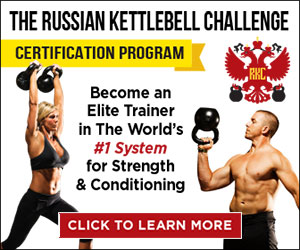After watching a past episode of Dragon Door TV (included at the bottom of this post) that showed Harry Connick Jr. training with kettlebells, and featured RKC instructor and opera singer, Kati Terray, it’s fairly obvious that kettlebell training can be particularly beneficial for singers. Being a vocalist myself, I felt the need to tell you why!
My vocal coach, Ron Feldman – the BEST in Orlando, always recommends that his students at least include cardiovascular exercise to help with proper breathing, appearance, and stamina on stage. I started to describe kettlebell training to him during our most recent lesson and he was very intrigued – especially after hearing me sing (it had been a

while). High intensity cardio like we do in kettlebell training not only does wonders for your heart, it can increase lung capacity. Power breathing ESPECIALLY helps singers with the type of controlled breathing that we do – engaging the diaphram (just as you are supposed to do with all kinds of singing, classical and otherwise). When studying classical voice in college, the idea of “supporting the breath” with use of the diaphram was a constant topic of discussion. If the breath is weak and shallow then not much singing is going to happen at all. Habitual, mindful breathing as practiced in RKC style kettlebell training is perfect for singers.

Likewise, following intense protocols like those in Viking Warrior Conditioning or even the simple but brutally effective Tabata Protocol with swings will over time allow you to hold out those notes longer than anyone. Melody Schoenfeld, a fellow RKC and singer, has also found that after regular training with kettlebells, her vocal endurance is definitely greater, that she can breathe deeper, and the power in her voice is greater. Melody and I agree that high volume swings and snatches can really help with breath control. She has also found that high volume heavy kettlebell swings seem to have improved my diaphragmatic breathing so she can perform for long durations without tiring.
RKC Hardstyle training also teaches us to “breathe behind the shield” when we’ve compressed 
“I now have the ability to jump around all over the stage and put on a really high energy show without being out of breath”
-Melody Schoenfeld, RKC
I have experienced this effect as well – especially after learning to “breathe behind the shield” a whole new level of flexible control is available to the performer. What is this technique?

Oddly enough it is taking quick relatively shallow breaths while maintaining (“supporting” in the words of my classical voice teachers of years past) abdominal pressure/stability. Do you want to use this for the entire song? No, but when you need to be particularly percussive, expressive or forceful for a few moments it can bring a new dimension to your performance. Learning to automatically use different types of breathing techniques during your vocal performances is especially freeing. The “instrument” is far far more than just your lungs and vocal chords, start thinking of your entire body as the musical instrument and your performances can get VERY interesting.
I remember reading Pavel’s statement of “Under Stress We Revert to Training” when reading one of the earlier Dragon Door kettlebell books.

Coming from a military background, Pavel was talking about the importance of training in proper movement so that under stress, when you don’t even have time to think, your muscle memory will do the right thing for you – combat situations of course are always stressful, but other situations, such as being behind a live microphone on stage with an audience of thousands, hundreds, or even just a few people can be extremely stressful too. At that moment, it’s a very good thing to have the hours and hours of correct diaphramatic breathing as done with kettlebell training to back you up. Many times the reason that new singers will fail under pressure on stage is that they forget to or forget HOW to breathe, their shoulders get all bunched up around their neck, breathing is shallow and at the top of the lungs and it goes downhill from there. This panic-style breathing is sometimes referred to as thoracic breathing and is bad for fitness training, singing, performing, and pretty much everything else in life…

Pavel’s “Under Stress…” statement also refers to treating light kettlebells with the same proper technique as we would with heavy kettlebells – again, under the correct assumption that our habits will carry over when something gets difficult or goes awry. Train your body accurately and you will subsequently train your brain. I like to try and program my unconscious for success…
Watch RKC Kati Terray with her operatic classical style and also Harry Connick Jr. training on the road!
Additional Resources:
Cool article about proper breathing – with pix!
Video from the audience of VideoGamesLive:






Leave a Reply